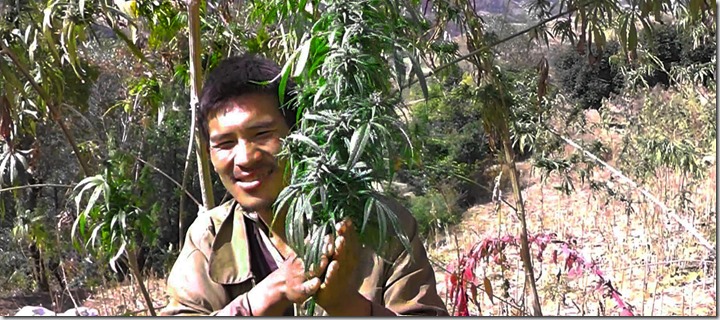
By Owen Smith
While not as ideal as dry sifting and making water hash, hand rubbing is the most basic method of separating the medicinal trichome heads from the body of the plant. This important step is at the centre of the constitutional challenge that I took to the Supreme Court of Canada in March of 2015. By separating the medicinal ingredients from the inert bulk of the plant, it is easy to produce a variety of edible and topical cannabis products for the wide-range of conditions that patients who use medical cannabis suffer from.
When one approaches a mature cannabis plant, it appears to be covered by a fine layer of whitish fuzz; when you get closer you see the fuzz looks more like a dense mat of small mushrooms. The mushroom caps (trichome heads) are sticky resin glands designed to catch pollen from male cannabis plants in order to reproduce. While the female plant matures, she produces more and more resin in an attempt to increase her chances of reproduction. The skilled gardener will ensure that the males and females remain apart so that no seeds are produced.

The thickening layer of medicinal resin will stick to anything that touches it and easily separate with a little friction. As you further fondle the flower clusters and resin covered foliage, the trichome heads will burst, releasing the encapsulated cannabinoids. The sticky resin will accumulate on your fingers until it becomes a dark malleable tar. This is an incidental form of extraction that occurs while the plant is being manicured. Often called “finger hash”, the collected resin will soon coat a pair of scissor blades, gloves and or a table top with the soft black tar, requiring a sharp edge to scrape it into shapes (commonly a ball or brick).
This method has persisted in cannabis fields across mountainsides in India, or under the African sun in Morocco or Malawi from ancient times up to the present day. This is the main method of resin collection in Nepal, where the cannabis plant has long been revered. Hand rubbing can draw the resins from a living plant without damaging it several times throughout the growing season, allowing the resin to regenerate. Interestingly, this gentle practice fits the concept of respecting all living beings that is inherent in Tibetan Buddhism.

The resin provides the plant with protection from wind, low humidity and Ultra Violet radiation. At higher altitudes, where cannabis produces more of this protective layer, hand rubbed hash is known to offer a notable aroma and potency and is referred to as “cream”. Photo-Journalist Laurence Cherniak in his “Great Books of Hashish” documents the production of Nepalese Temple Balls which often include other medicinal plant resins such as opium.
I recently completed the constitutional challenge that has allowed patients to access medicinal cannabis extracts in Canada. Collecting hand rubbed resin is an incidental part of growing cannabis, currently this resin is being thrown away with the rubber gloves of MMPR employees. The right to grow your own cannabis plants is currently being fought for in the Canadian Courts. Visit the Cannabis Rights Coalition for more information about that case.
By Owen Smith
(Article first appeared at LiftCannabis)




